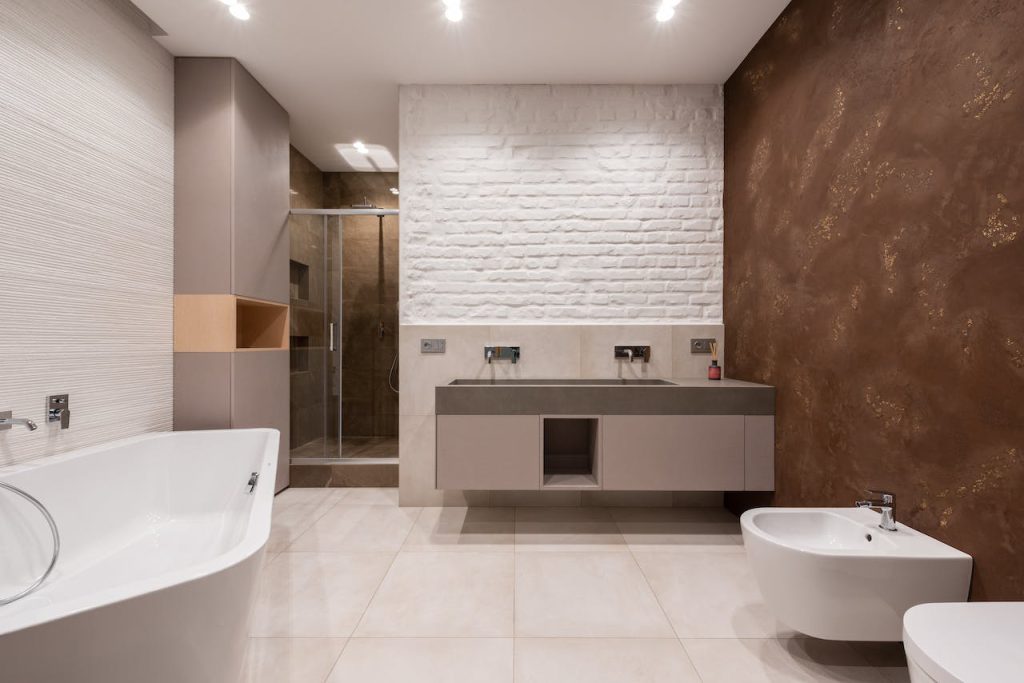Malfunctioning toilets can create the perfect breeding ground for mold, leading to potential health hazards and contamination situations. Mold growth in toilets is a common problem that needs to be addressed promptly and effectively. Understanding the connection between toilet malfunctions and mold issues is crucial in preventing further complications.
When toilets overflow or have leaks, stagnant water can accumulate, providing an ideal environment for mold growth. The presence of organic matter combined with moisture creates a prime breeding ground for bacteria and mold spores. If left unattended, mold can spread not only within the toilet bowl but also throughout the bathroom, posing risks to individuals with respiratory conditions or compromised immune systems.
To prevent mold growth caused by malfunctioning toilets, it is essential to identify and address the root cause of the problem. Regular maintenance, prompt repairs of leaks or overflows, and keeping the toilet area clean and dry are key preventive measures.
Table of Contents
ToggleCauses Of Toilet Mold: Plumbing Issues And High Humidity
Plumbing leaks and high humidity levels are two common causes that can lead to mold growth in toilets. Let’s take a closer look at each of these factors:
Plumbing Leaks Can Contribute To Mold Growth In Toilets
Plumbing leaks are often the culprit. If there’s a leak in your toilet’s plumbing system, water can seep into areas where it shouldn’t be. This excess moisture creates the perfect environment for mold to thrive.
Here are some key points about how plumbing leaks can contribute to toilet mold:
- Leaky pipes or faulty seals around the base of the toilet can allow water to escape.
- A constantly running toilet can result in prolonged exposure to moisture.
- Undetected leaks behind the walls or under the floor can go unnoticed for long periods, promoting mold growth.
To prevent mold caused by plumbing issues, it’s important to address any leaks promptly. If you suspect a leak, consider contacting a plumber who can identify and fix the problem before it leads to further damage.
Excessive Humidity Levels In Bathrooms Can Lead To Mold Formation
Another factor that contributes to toilet mold is excessive humidity levels within bathrooms. Bathrooms tend to have higher humidity due to steam from hot showers and baths. When this moisture lingers in the air without proper ventilation, it creates an ideal breeding ground for mold.
Consider these points about how high humidity levels contribute to toilet mold:
- Insufficient ventilation or lack of exhaust fans traps moisture inside the bathroom.
- Inadequate airflow allows dampness to accumulate on surfaces such as walls, ceilings, and even inside toilets.
- Bathrooms with poor insulation may experience condensation on cold surfaces like pipes or windowsills.
To combat excessive humidity and prevent mold growth, here are some helpful tips:
- Use exhaust fans or open windows while showering or bathing to allow moisture to escape.
- Wipe down surfaces after showering to remove excess moisture.
- Consider using a dehumidifier in your bathroom to reduce humidity levels.
- Ensure proper insulation and seal any gaps or cracks that may contribute to moisture buildup.
By addressing high humidity levels, you can significantly reduce the risk of mold growth in your toilet and bathroom.
Identifying Mold In The Toilet: Appearance And Symptoms
Black Or Greenish Patches
One of the telltale signs of mold in toilets is the presence of black or greenish patches. These unsightly spots can appear on various surfaces inside the toilet, such as the bowl, tank, or even around the base. Mold thrives in damp and humid environments, making toilets an ideal breeding ground. The black or green coloration indicates the presence of mold colonies, which are made up of microscopic particles called spores.
Musty Odor
Another way to identify mold in a toilet is through its distinctive musty odor. If you notice a lingering smell coming from your toilet, it could be a sign of mold growth. Mold releases volatile organic compounds (VOCs) that produce this unpleasant smell. The musty odor may become more noticeable after flushing or when you enter the bathroom. It’s important not to ignore this odor, as it could indicate a hidden mold problem that requires immediate attention.
Visual Cues And Smells
Recognizing visual cues and smells is crucial for identifying potential mold problems in your toilet. By being observant and using your senses, you can detect early signs of mold growth before it becomes a major issue. Regularly inspect your toilet for any discoloration or unusual patches, especially in hard-to-reach areas like under the rim or inside the tank. Pay attention to any strange odors emanating from the toilet area.
Chronic Symptoms
Mold exposure can lead to various health issues, so it’s essential to be aware of any chronic symptoms that may arise from using a mold-infested toilet. Some common symptoms include respiratory problems like coughing, wheezing, and shortness of breath. Allergic reactions such as sneezing, itching, and watery eyes may also occur. If you or anyone in your household experiences these symptoms consistently, it’s worth investigating whether mold in the toilet could be the underlying cause.
Taking Action
If you suspect mold in your toilet, it’s crucial to take prompt action to address the issue and prevent further damage. Here are some steps you can take:
- Clean and disinfect: Use a mixture of bleach and water or a commercial mold cleaner to thoroughly clean affected areas. Make sure to wear protective gloves and ensure proper ventilation during the cleaning process.
- Improve ventilation: Increase airflow in your bathroom by opening windows or using exhaust fans to reduce moisture levels.
- Fix leaks: If there are any plumbing issues causing excess moisture, such as leaking pipes or a faulty toilet seal, have them repaired promptly.
- Reduce humidity: Consider using a dehumidifier in your bathroom to control moisture levels and discourage mold growth.
- Regular maintenance: Keep up with regular cleaning and maintenance of your toilet to prevent mold from recurring.
By being vigilant and proactive, you can effectively tackle mold problems in your toilet before they escalate into more significant issues that require costly repairs.
Health Risks Associated With Mold In The Toilet
Exposure to toilet mold can lead to various health risks, particularly affecting our respiratory system. Mold is a type of fungus that grows in damp and humid environments, making the moist conditions of a malfunctioning toilet an ideal breeding ground. It’s important to be aware of these health risks and take necessary steps to prevent and address mold issues in our toilets.
Respiratory Issues: Allergies And Asthma
One of the primary health risks associated with toilet mold is its potential to trigger respiratory issues. When we come into contact with mold spores, either by inhaling them or through skin contact, it can cause allergic reactions. These reactions may manifest as sneezing, coughing, itching, or watery eyes. People who already have allergies may experience heightened symptoms when exposed to toilet mold.
Moreover, individuals with asthma are particularly vulnerable to the effects of mold exposure. The presence of mold spores in the air can act as irritants and trigger asthma attacks. This can result in wheezing, shortness of breath, chest tightness, and coughing. Prolonged exposure to certain types of molds may exacerbate existing asthma symptoms or even lead to the development of asthma in some cases.
Potential For More Severe Health Problems
While allergic reactions and asthma are common health problems associated with toilet mold exposure, prolonged exposure to certain types of molds may pose more severe risks. Some molds produce mycotoxins—harmful substances that can have toxic effects on our bodies when ingested or inhaled over time.
These mycotoxins have been linked to a range of health issues such as respiratory infections, sinusitis (inflammation of the sinuses), bronchitis (inflammation of the bronchial tubes), and even more serious conditions like pneumonia. Individuals with weakened immune systems or underlying respiratory conditions are particularly susceptible to these health problems.
Importance Of Addressing Toilet Mold Issues
Understanding the potential health risks associated with toilet mold highlights the importance of promptly addressing any mold issues in our toilets. Taking proactive measures to prevent mold growth, such as ensuring proper ventilation and minimizing moisture buildup, can help reduce the risk of exposure to harmful molds.
Regular cleaning and maintenance of toilets are crucial in preventing mold growth. Using appropriate cleaning products and techniques can effectively remove existing mold and inhibit its future growth. Fixing any plumbing leaks or malfunctions that contribute to excess moisture in the toilet area is essential for preventing mold from thriving.
By being aware of the potential health risks associated with toilet mold, we can prioritize maintaining a clean and dry environment in our bathrooms. This not only promotes good hygiene but also safeguards our respiratory health from the detrimental effects of mold exposure.
Effective Methods For Removing Toilet Mold: Laundry Additives, Vinegar, Baking Soda
Toilet mold can be a pesky problem that needs to be addressed promptly to prevent further issues. Luckily, there are several effective methods for removing toilet mold stains. Let’s explore three popular options: laundry additives, vinegar, and baking soda.
Laundry Additives
Laundry additives containing bleach can be highly effective in removing toilet mold stains. These products are specifically designed to tackle tough stains and kill bacteria. When using laundry additives for toilet mold removal, follow these steps:
- Flush the toilet to wet the affected area.
- Apply the laundry additive directly onto the mold stains.
- Let it sit for a few minutes to allow the bleach to penetrate and break down the mold.
- Use a toilet brush or scrubber to gently scrub away the mold.
- Flush again to rinse off any remaining residue.
Pros:
- Laundry additives with bleach have strong stain-removing properties.
- They can help eliminate bacteria and prevent future mold growth.
Cons:
- Bleach-based products may have a strong odor that some people find unpleasant.
- It’s important to use caution when handling bleach as it can cause skin irritation if not properly diluted or rinsed off.
Vinegar
Vinegar is a natural cleaner with acidic properties that make it an excellent option for removing toilet mold. Here’s how you can use vinegar effectively:
- Pour undiluted white vinegar into a spray bottle.
- Spray the affected areas generously with vinegar.
- Allow it to sit for at least 30 minutes or overnight for stubborn stains.
- Scrub with a toilet brush or sponge until the mold is loosened and removed.
- Flush the toilet multiple times to thoroughly rinse away any residual vinegar.
Pros:
- Vinegar is an affordable and readily available household product.
- Its acidic nature helps break down mold and remove stains effectively.
Cons:
- The strong smell of vinegar may be unpleasant for some individuals.
- Vinegar may not be as effective on deeply embedded or extensive mold growth.
Baking Soda
Baking soda is another natural cleaning agent that can help scrub away stubborn toilet mold spots. Follow these steps to use baking soda for toilet mold removal:
- Create a paste by mixing baking soda with water until it forms a thick consistency.
- Apply the paste directly onto the moldy areas, ensuring full coverage.
- Let it sit for 15-20 minutes to allow the baking soda to work its magic.
- Scrub the affected areas with a toilet brush or sponge to loosen and remove the mold.
- Flush the toilet multiple times to rinse away any residue.
Pros:
- Baking soda is gentle yet effective at removing stains without causing damage to surfaces.
- It’s an affordable and non-toxic option that is safe for both humans and pets.
Cons:
- For severe cases of toilet mold, baking soda alone may not be sufficient, and additional cleaning methods might be necessary.
- Stubborn or deep-rooted mold may require multiple applications of baking soda paste.
Preventing Toilet Mold: Importance Of Proper Ventilation And Regular Cleaning
Proper ventilation and regular cleaning are crucial in preventing toilet mold growth. Inadequate ventilation can lead to high moisture levels, creating the perfect environment for mold to thrive. Regular cleaning routines help remove excess moisture and prevent the buildup of mold in toilets.
Adequate Ventilation Reduces Moisture Levels
Having proper ventilation in your bathroom is essential for preventing toilet mold. When a toilet is used, water splashes onto the surfaces, including the toilet bowl and seat. Without adequate airflow, this moisture can linger and create a breeding ground for mold.
To ensure proper ventilation, consider the following:
- Install an exhaust fan or open a window to allow fresh air circulation.
- Make sure the fan is functioning correctly and clean it regularly.
- Avoid blocking vents or obstructing airflow with towels or other items.
By reducing moisture levels through adequate ventilation, you can significantly decrease the likelihood of mold growth in your toilet.
Regular Cleaning Routines Prevent Mold Development
Regular cleaning plays a vital role in preventing mold from taking hold in your toilet. By maintaining a clean and dry environment, you eliminate the ideal conditions that promote mold growth.
Here are some tips for effective regular cleaning:
- Clean both the inside and outside of the toilet bowl using a disinfectant cleaner.
- Pay attention to hard-to-reach areas such as under the rim and around the hinges.
- Wipe down all surfaces with a dry cloth after each use to remove any remaining moisture.
- Empty and clean the toilet tank periodically to prevent stagnant water buildup.
- Use appropriate cleaning products that specifically target mold prevention.
Consistently practicing these cleaning routines will help keep your toilet free from harmful molds.
Proper Maintenance Practices Are Essential
In addition to proper ventilation and regular cleaning, maintaining your plumbing system is essential for preventing toilet mold issues. A malfunctioning plumbing system can lead to leaks, which create excess moisture that fosters mold growth.
To ensure proper maintenance:
- Check for any leaks or drips regularly and fix them promptly.
- Inspect the toilet’s water supply and drainage system for any issues.
- Consider hiring a professional plumber to conduct routine maintenance checks.
By addressing plumbing problems promptly, you can minimize the risk of mold growth due to water damage.
Conclusion: Taking Action To Prevent Mold Issues In Your Bathroom
In conclusion, it is crucial to address any potential issues with your toilet to prevent the growth of mold in your bathroom. Plumbing issues and high humidity are common causes of toilet mold, which can lead to health risks if left untreated. Identifying mold in the toilet can be done by observing its appearance and recognizing symptoms such as a musty odor or respiratory problems. Fortunately, there are effective methods for removing toilet mold, including using laundry additives, vinegar, or baking soda.
To prevent toilet mold from recurring, it is important to prioritize proper ventilation and regular cleaning. Ensuring that your bathroom has adequate airflow will help reduce moisture levels and inhibit the growth of mold. Maintaining a consistent cleaning routine will help eliminate any potential sources of mold spores and keep your bathroom environment healthy.
Take action now to protect yourself and your family from the dangers of toilet mold. By following these preventive measures and promptly addressing any plumbing or humidity issues, you can create a clean and safe bathroom environment.
Sources:
Looking For A Reliable Malfunctioning Toilet Repair Team?
Look no further than Garcia Plumbing and Home Restoration! We are your go-to experts for all your toilet and plumbing needs. Our licensed and insured team delivers top-notch services that will leave you impressed.
We cover it all, from toilet repairs and replacements to clog removal and water-efficient upgrades. We’re also experts in bathroom mold remediation and plumbing-related damage repair. No matter the issue, we have the skills to restore your bathroom to its former glory.
At Garcia Plumbing and Home Restoration, our commitment is unwavering. We provide exceptional service to homeowners throughout Contra Costa County and beyond. With satisfied repeat customers and glowing referrals, we take immense pride in our quality workmanship.
Don’t hesitate! Contact us today, and let us be your trusted partner in fixing your malfunctioning toilet. Experience the difference our dedicated team can make in bringing your bathroom back to life!




